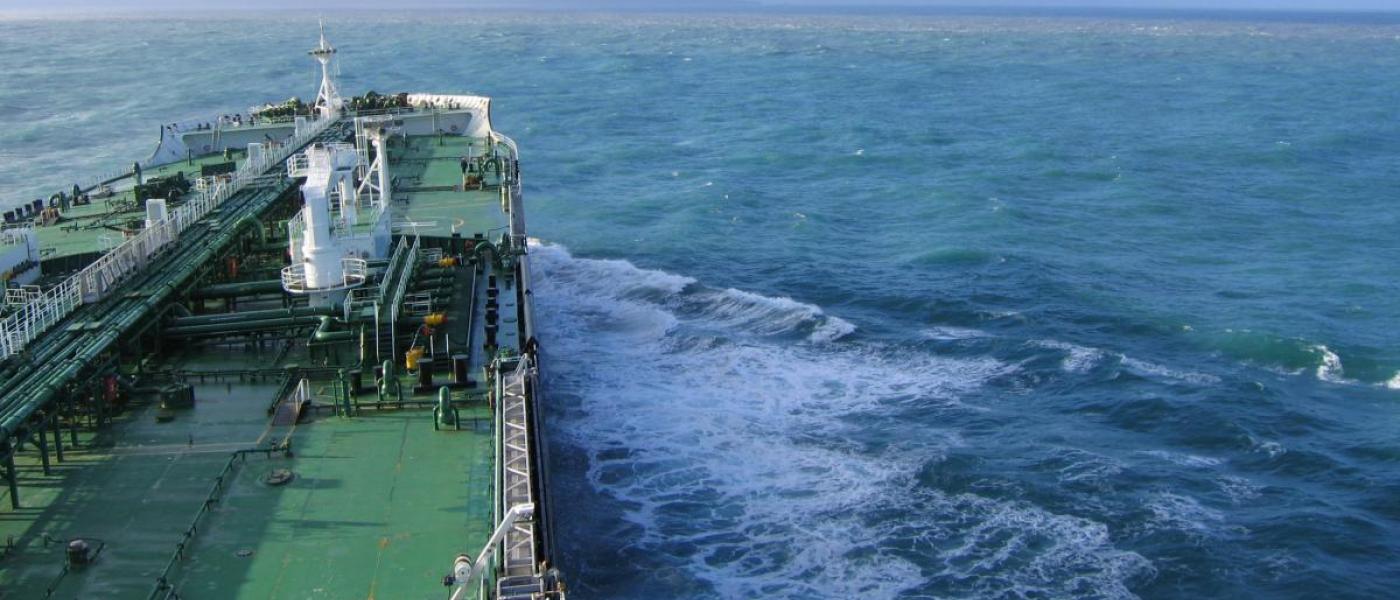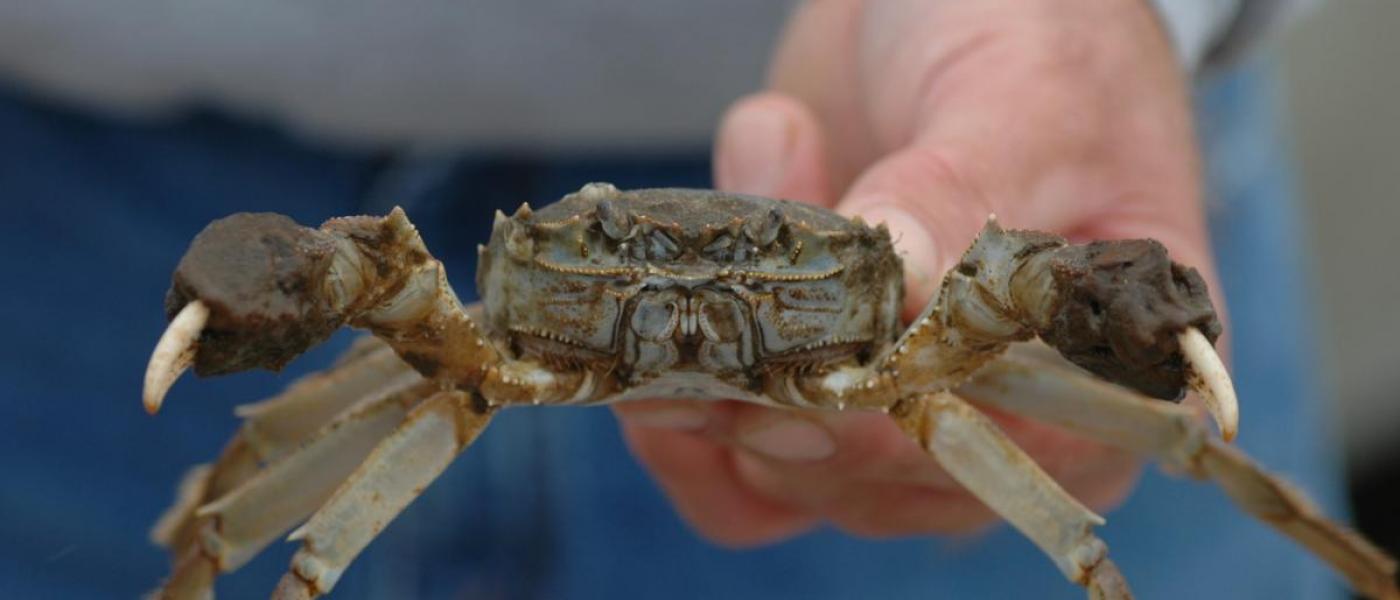Smithsonian researchers study ocean stowaways to assess their impacts

An oil tanker in the waters of Alaska. The international shipping industry provides the potential for species to travel across the world. Image credit: SERC
Imagine the tiniest of stowaways. A crab scuttles across the floor of a ship traveling from the Indian Ocean to the Pacific, or a sea squirt gets caught up in SCUBA gear that travels from Japan to the East Coast of the United States.
These tiny travelers make their way across oceans and have far-reaching impacts on marine ecosystems and subsequently, human systems.
The Marine Invasions Research Lab, based at the Smithsonian Environmental Research Center (SERC) is the nation’s largest program dedicated to monitoring the ocean and coastal regions for non-native species—and especially for the harmful non-natives that scientists call “invasive.”
How do invasive marine species spread?
Most non-native species found in coastal waters arrive in the U.S. by stowing away on commercial ships. More specifically, they colonize the hulls of vessels or are swept along in a ship’s ballast water—the water ships store on board to stabilize them in the absence of cargo. In 1996, the U.S. Congress passed the National Invasive Species Act to reduce the spread of invasive species, and it included a mandate for the Smithsonian. The law established the National Ballast Information Clearinghouse (NBIC), a joint program of SERC and the U.S. Coast Guard. The clearinghouse analyzes and interprets data on how commercial ships operating in U.S. waters manage their ballast water to reduce the frequency at which marine species are transferred between bodies of water.
All commercial ships that enter the U.S.—totaling approximately 100,000 vessels each year—are required to submit data on their ballast water to NBIC, and the Smithsonian makes all these data publicly available. If a ship discharges ballast water in a U.S. port, they must report where the water originated, how much of it is released, and how the water has been treated to reduce potential invaders. SERC scholars evaluate these data on a national scale to assess the success of these efforts.
What could stop Chinese mitten crabs?

The Chinese mitten crab is native to East Asia and is considered one of the world’s most invasive species. The crab likes to burrow in structures, which means it damages fishing gear, as well as levees and sea dikes built to prevent flooding and erosion, and this can cause water supply and flooding prevention systems to fail.
The Chinese mitten crab has established itself as an invader in both Europe and the U.S. It was first discovered in the U.S. in 2005, when SERC confirmed the first Chinese mitten crab appearance in the Chesapeake Bay. Spurred by this initial report, SERC launched an online tracking system called Mitten Crab Watch, where anyone can report a sighting.
The effort yielded more than 200 initial reports, confirming the invasive crab species lived along both the Atlantic and Pacific coasts of the U.S. Fortunately, there might be a solution—in some parts of the world, Chinese mitten crabs are considered a culinary delicacy. The crabs caught in Europe and the U.S. tend to be juveniles with very little meat, but in the long term, changes in fishing practices might make cooking the crabs the best solution.
Decontaminating and removing "rock vomit"

Another invasive species that threatens commercially important fish species and local biodiversity on both coasts of the U.S. is referred to as “rock vomit.” A marine invertebrate, rock vomit is a sea squirt and has a brown, amorphous appearance (thus the nickname). Its soft, tube-like structures can grow quickly on docks, boat hulls, rocks, and other coastal surfaces, including oyster and mussel shells. In 2010, scientists in Sitka, Alaska discovered the sea squirt in the harbor and promptly went to work, surveying and mapping the invasion.
SERC scientists worked with state, federal, and university partners to stop the spread of the species, testing possible eradication strategies. The researchers began by applying several experimental chemical treatments to the water at a small scale, so far with modest success. Since then, SERC scientists have collaborated with colleagues in New Zealand to evaluate approaches and develop the tools needed to eradicate a broader range of non-native marine species at larger scale.
International efforts to address challenges from invasive species

The international shipping industry provides the potential for species to travel across the world and opens up a host of challenges from invasive species. Solving this global issue requires a global effort. In 1998, SERC started a database, called NEMESIS, that is now the most complete database of North American introduced marine and coastal species to date. Their work did not stop there, soon reaching waters in Central and South America.
In 2019, SERC scientists collaborated with the Charles Darwin Foundation to create a NEMESIS-like database, called GalNEMO, to track non-native species in the Galapagos. SERC also collaborated with the Smithsonian Tropical Research Institute to create a similar portal for Panama, called PanNEMO. Also in 2019, SERC initiated the COMBINA program, which coordinates across the Americas, from pole-to-pole to reduce the risk of new marine invasions at scales larger than any one country.
More Resources:
- Are Invasive Species All Bad? (Smithsonian Ocean article)
- Five Invasive Species You Should Know (Smithsonian Ocean article)
- Identifying invasive insects with the National Insect Collection (Smithsonian Magazine article)
- Invasive species (National Museum of Natural History Museum teaching resource)
